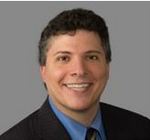document.createElement(‘aside’);

http://www.accountingtoday.com
![]() Print
Print
![]() Email
Email
 The Internal Revenue Service issued an Audit Techniques Guide last month governing compliance with the tangible property repair regulations.
The Internal Revenue Service issued an Audit Techniques Guide last month governing compliance with the tangible property repair regulations.
The guide provides a meaningful framework for IRS examiners during audits by providing insight into tax issues and accounting methods unique to specific industries.
While Audit Techniques Guides are issued to provide administrative guidance for IRS employees, they’re also highly pragmatic frameworks for tax professionals in assessing sustainable tax return filing positions while mitigating tax compliance risk.
The ATG has been released as the IRS prepares for a considerable number of anticipated new audits to commence before the calendar year-end in connection with assessing taxpayers’ compliance with the tangible property repair regulations.
As a best practice tip, tax professionals who have implemented a change in accounting method to re-characterize the tax treatment of tangible property (e.g., capitalize vs. deduct) should be aware of the issues within this ATG, how potential audits may be structured and their effect on a client’s tax return and financial statements (i.e., the accounting for income taxes treatment under ASC 740 and FIN 48).
A copy of the ATG is available at https://www.irs.gov/pub/irs-utl/tangiblepropertyatg9142016.pdf.
Peter J. Scalise serves as the federal tax credits and incentives practice leader for Prager Metis CPAs, LLC, a member of The Prager Metis International Group. Peter is a Big Four alumni tax practice leader and has over 20 years of progressive CPA firm experience developing, managing and leading multimillion dollar tax advisory practices on a regional, national and global level. He serves on both the board of directors and board of editors for the American Society of Tax Professionals and is the founding president and chairman of the Northeastern Region Tax Roundtable, an operating division of ASTP.
‘);
var $text = $(”).text(text);
var $meta = $(”);
var $newComment = $comment.append($text).append($meta);
if ($(‘.no-comments’).length) {
$(‘.no-comments’).after($(”).append($newComment));
$(‘.no-comments’).remove();
} else {
$(‘#comments-box .comment’).last().after($newComment);
}
$(‘.comments-count’).each(function(){
$(this).text(+$(this).text()+1);
});
}
function ajaxBusyTest() {
buttonOff();
setTimeout(buttonOn, 3000);
}
var commentOptions = {
client_id: ‘webcpa_news’,
story_id: ‘79619’,
user_id: ”,
comment_message: ” // textarea or NOCOMMENT
};
function postComment(options, callback, doButtonOff) {
callback = callback || function(){};
doButtonOff = typeof doButtonOff === ‘undefined’ ? true : doButtonOff;
var opts = $.extend(true, {}, commentOptions);
$.extend(true, opts, options);
if (doButtonOff) buttonOff();
$.ajax({
type:”POST”,
url: ‘/apps/custom/ajax_post_comment.php’,
data: opts,
success: function(data) {
callback($.parseJSON(data));
if (doButtonOff) buttonOn();
}
});
};
function showNotification(message) {
$.fancybox(message+’
Return to article.’);
};
$.fn.extend({
charWarden: function (outSelector, limit) {
return this.each(function(){
var $this = $(this);
var $out = $(outSelector);
var _limit = limit;
var _chars = 0;
function handler(e) {
_chars = e.target.value.length;
var left = _limit – _chars;
if (left = (page-1)*listCount i 3 (page (pageCount -2)) {
showMin = pageCount – 4;
if (showMin ‘;
if (page 1) {text += ‘
‘;}
while (count ‘ + count + ”;
if (showMax != count) {
text += ‘ | ‘;
}
text += ”;
count++;
}
if (page
‘;}
text += ”;
$(pagination).html(text);
}
function scrollToTop(){
$(‘html, body’).animate({
scrollTop: parseInt($(“#comments”).offset().top)
}, 700);
}
showPage(page);
if (pageCount 1){
buildPagination(page,pageCount);
$(pagination+” li.arrow_double_right a”).live(‘click’,function(){
page = pageCount;
showPage(page);
buildPagination(page,pageCount);
scrollToTop();
});
$(pagination+” li.arrow_right a”).live(‘click’,function(){
showPage(++page);
buildPagination(page,pageCount);
scrollToTop();
});
$(pagination+” li.numbers a”).live(‘click’,function(){
page = $(this).data(‘number’);
//console.log(“pageCount: “+pageCount+” page: “+page);
showPage(page);
buildPagination(page,pageCount);
scrollToTop();
});
$(pagination+” li.arrow_left a”).live(‘click’,function(){
showPage(–page);
buildPagination(page,pageCount);
scrollToTop();
});
$(pagination+” li.arrow_double_left a”).live(‘click’,function(){
page = 1;
showPage(page);
buildPagination(page,pageCount);
scrollToTop();
});
}
}
$(function(){ // DOM ready
paginateComments();
$(‘.scroll-into-view’).each(function(i){if (i == 0) this.scrollIntoView();});
$(‘.reset-form’).click(function(e){
e.preventDefault();
this.form.reset();
});
$(‘#comment_message’).charWarden(‘#chars-remaining’, 4096);
$(‘.comment-notify’).click(function(e) {
e.preventDefault();
var options = {
comment_notify: ‘TRUE’,
comment_message: ‘NOCOMMENT’
};
var notification = function(data) {
if (data.success) {
$(‘.not-following’).hide();
$(‘.following’).show();
showNotification(data.success);
} else if (data.error) {
showNotification(data.error);
}
};
postComment(options, notification);
});
$(‘#wrapperForm’).on(‘submit’, function(e) {
e.preventDefault();
var options = {
comment_notify: $(‘#comment_notify’).prop(‘checked’) ? ‘TRUE’ : ”,
comment_message: $(‘#comment_message’).val()
};
var notification = function(data) {
if (data.success) {
if ($(‘#comment_notify:checked’).length) {
$(‘.not-following’).hide();
$(‘.following’).show();
}
document.wrapperForm.reset();
addPostOptimistically(options.comment_message);
$(‘#comment_message’).change();
} else if (data.error) {
showNotification(data.error);
}
};
postComment(options, notification);
});
$(‘a.username’).fancybox({
‘hideOnOverlayClick’: false,
‘centerOnScroll’ : true,
‘autoScale’ : false,
‘autoDimensions’ : false,
‘width’: 435,
‘height’: 205,
‘onClosed’: function() {
if ($(‘#do-refresh’).length) location.reload();
}
});
}); // end DOM ready
})(jQuery);
Be the first to comment on this post using the section below.